| |||||
| Decades: | |||||
|---|---|---|---|---|---|
| See also: | |||||
The following lists events that happened during 1986 in the Somali Democratic Republic .
| |||||
| Decades: | |||||
|---|---|---|---|---|---|
| See also: | |||||
The following lists events that happened during 1986 in the Somali Democratic Republic .
Ongoing – Somali Rebellion

Somali, officially the Federal Republic of Somalia and formerly known as the Somali Democratic Republic, is a country located in the Horn of Africa. The country was an important centre for commerce with the rest of the ancient world, and according to most scholars, it was the seat of ancient Land of Punt that thrived during bronze age. During the classic era until the Middle Ages, several powerful Somali states and port towns dominated the regional trade, including the Sultanate of Mogadishu and the Ajuran Sultanate, both centered around the port town of Mogadishu. Additionally, the port towns of Barawe and Merca played significant roles in this commercial network which were part of the Azania city states during classic era. Preceding these medieval states were ancient civilisations such as the legendary Macrobian Kingdom, noted by Herodotus for its wealth and wisdom, and the Barbario civilisation, an early pre-Islamic civilisation that helped lay the foundations for the region's prosperous trade routes.

The Somali Armed Forces are the military forces of the Federal Republic of Somalia. Headed by the president as commander-in-chief, they are constitutionally mandated to ensure the nation's sovereignty, independence and territorial integrity.
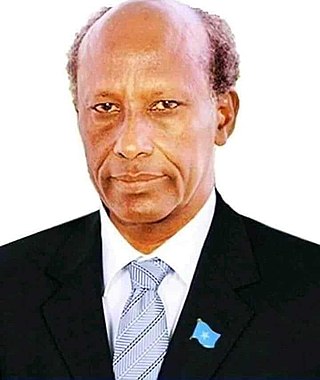
Mohamed Farrah Hasan Garad, popularly known as General Aidid or Aideed, was a Somali military officer and warlord.

Mohammed Siad Barre was a Somali military officer, politician and revolutionary who served as the third president of Somalia from 21 October 1969 to 26 January 1991.

Abdiqasim Salad Hassan, also known as Abdiqasim Salad, is a Somali politician who served as the fifth President of Somalia from 2000 to 2004. He helped found the Transitional National Government and previously served as Minister of Interior in the government of Siad Barre.
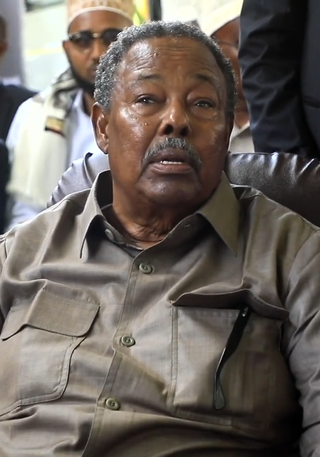
Ali Mahdi Muhammad was a Somali entrepreneur and politician. He served as President of Somalia from 26 January 1991 to 27 August 1993. The Cairo Agreement in December 1997 designated Ali Mahdi as president once again, a position he held until being succeeded by Abdiqasim Salad in the year 2000.

Mohammad Ali Samatar. was a Somali military officer, politician, former Commander-in-Chief of the Somali National Army, former Minister of Defence, former Vice President (1971-1990), former Deputy General Secretary of the Somali Revolutionary Socialist Party, and former Prime Minister. He was known for his intelligent military tactics in the 1964 Ethiopian–Somali Border War, Ogaden War and 1982 Ethiopian–Somali Border War.
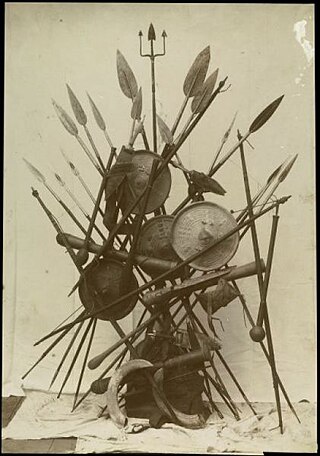
The Rahanweyn, also known as the Digil and Mirifle is a major Somali clan. It is one of the major Somali clans in the Horn of Africa, with a large territory in the densely populated fertile valleys of the Jubba and Shebelle rivers and the areas inbetween, which are mainly inhabited by settlers from the Digil and Mirifle lineages.

The Somali Youth League, initially known as the Somali Youth Club (SYC), was the first political party in Somalia.
The Somali Rebellion was the start of the Somali Civil War that began in the 1970s and resulted in the collapse of the Somali Democratic Republic in 1991. The rebellion effectively began in 1978 following a failed coup d’état and President Siad Barre began using his special forces, the "Red Berets", to attack clan-based dissident groups opposed to his regime. Backed by Ethiopia, the two earliest rebel factions, the Somali Salvation Democratic Front (SSDF) and the Somali National Movement (SNM) began attacks during the against government forces during the early 1980s.
The Somali National Front (SNF) was a politico-military organization that operated in southern Somalia during the Somali Civil War and represented one of the major factions involved in the conflict.
Over the course of the Somali Civil War, there have been many revolutionary movements and militia groups run by competing rebel leaders which have held de facto control over vast areas within Somalia.
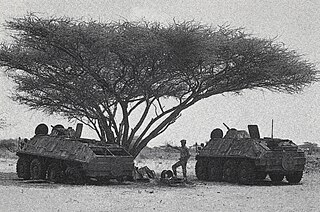
The Ethiopian–Somali Border War occurred from June 1982 to August 1983 when Ethiopia, sending a 10,000-man invasion force backed by warplanes and armoured units, supported by thousands of Somali Salvation Democratic Front (SSDF) rebels, invaded central Somalia.

Parliamentary elections were held in Somalia on 30 December 1979. The elections were the first since 1969 and the first to be held under the new constitution approved in a referendum held in August, which had made the country a one-party state. As a result, the Somali Revolutionary Socialist Party (SRSP) was the only party to participate in the election, with voters being asked to vote yes or no to a single list of 171 candidates. A reported 99.95% of voters ultimately approved the list. The Assembly elected Siad Barre as President, who then nominated a further six members to the Assembly.

Presidential elections were held in Somalia on 23 December 1986, the first time a direct election for President had been held. The country was a one-party state at the time, with the Somali Revolutionary Socialist Party (SRSP) as the sole legal political party. Its leader, incumbent President Siad Barre, was the only candidate. He was re-elected with fewer than 1,500 votes against his candidacy.

The Supreme Revolutionary Council was the governmental body that ruled Somalia from 1969 to 1976.

The Isaaq genocide, also known as the Hargeisa Holocaust, was the systematic, state-sponsored genocide of Isaaq civilians between 1987 and 1989 by the Somali Democratic Republic, under the dictatorship of Siad Barre, during the Somaliland War of Independence. The number of civilian deaths in this massacre is estimated to be between 50,000 and 100,000, according to various sources, whilst local reports estimate the total civilian deaths to be upwards of 200,000 Isaaq civilians. The genocide, which escalated after the Somali National Movement (SNM)'s 1988 Northern Somalia offensive, also included the levelling and complete destruction of the second and third largest cities in the Somali Republic, Hargeisa and Burao, respectively, and had caused up to 500,000 Somalis of the region, primarily of the Isaaq clan, to flee their land and cross the border to Hartasheikh in Ethiopia as refugees in what was described as "one of the fastest and largest forced movements of people recorded in Africa", which resulted in the creation of the world's largest refugee camp then (1988), with another 400,000 being displaced. The scale of destruction led to Hargeisa being known as the 'Dresden of Africa'. The killings happened during the Somali Civil War and have been referred to as a "forgotten genocide".

The 1969 Somali coup d'état was a bloodless military takeover of the Somali Republic on 21 October 1969, led by Somali National Army officers of the Supreme Revolutionary Council under General Siad Barre. After the assassination of President Abdirashid Shermarke in Las Anod, the Somali National Army under Barre's command stormed Mogadishu, seized key government buildings, and demanded the resignation of the country's leaders. The coup deposed acting President Sheikh Mukhtar Hussein and Prime Minister Mohammad Egal, ushering in a 21-year military rule under Barre and the establishment of an authoritarian government that lasted until 1991.

The Somaliland War of Independence was a rebellion waged by the Somali National Movement (SNM) against the ruling military junta in Somalia led by General Siad Barre lasting from its founding on 6 April 1981 and ended on 18 May 1991 when the SNM declared what was then northern Somalia independent as the Republic of Somaliland. The conflict served as the main theater of the larger Somali Rebellion that started in 1978. The conflict was in response to the harsh policies enacted by the Barre regime against the main clan family in Somaliland, the Isaaq, including a declaration of economic warfare on the clan-family. These harsh policies were put into effect shortly after the conclusion of the disastrous Ogaden War in 1978.
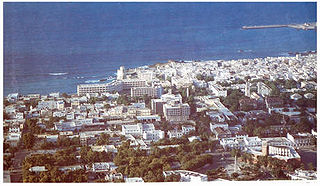
The Mogadishu riots of July 1989 were a series of violent events that took place in the capital city of Somalia on 14 and 15 July 1989. A significant event in modern Somali history, the riot and killings that followed were the first serious violence Mogadishu had seen and preluded the approaching Somali Civil War. The event was sparked by the assassination of Roman Catholic Bishop of Mogadishu Salvatore Colombo and the subsequent arrest of several Muslim religious leaders by the Barre regime.